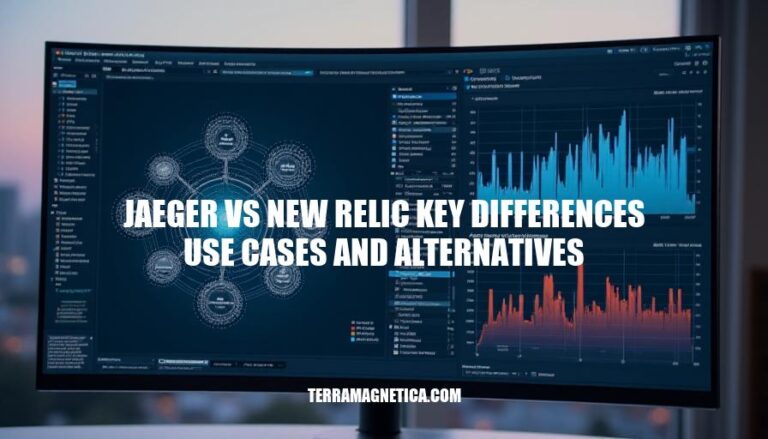


When it comes to application monitoring and observability, choosing the right tool is crucial. Jaeger and New Relic are two popular options, each with unique features and strengths. Jaeger, an open-source tool, excels in end-to-end distributed tracing, making it ideal for microservices architectures. New Relic, a comprehensive SaaS solution, offers a wide range of monitoring capabilities, including application performance, infrastructure, and network monitoring.
Understanding the key differences, use cases, and alternatives between these tools helps ensure you select the best fit for your specific needs, ultimately enhancing your application’s performance and reliability.
Here are the key differences between Jaeger and New Relic:
Scope:
Features:
Jaeger:
New Relic:
Type of Monitoring:
Both tools are powerful in their own right, but they cater to different needs within the observability and monitoring landscape.
Jaeger is most effective in the following use cases:
End-to-End Distributed Tracing for Microservices: Jaeger excels at tracking the entire journey of a request across multiple services, providing insights into how each service contributes to the overall performance. This is crucial for understanding complex microservice interactions and identifying performance bottlenecks.
Performance and Latency Optimization: By visualizing the flow of requests, Jaeger helps pinpoint slow services and optimize their performance. This is essential for maintaining efficient and responsive applications.
Root Cause Analysis: Jaeger allows you to trace errors back to their source, making it easier to debug and fix issues quickly. This is particularly useful in microservices architectures where problems in one service can cascade to others.
Service Dependency Analysis: It provides a clear view of how services depend on each other, helping to identify and resolve potential coupling issues. This is vital for maintaining a healthy and scalable microservices ecosystem.
Distributed Transaction Monitoring: Jaeger monitors data movements between microservices, ensuring that transactions are completed successfully and efficiently. This is important for applications that require high reliability and consistency.
Open-Source Nature: Being open-source, Jaeger is highly customizable and can be tailored to fit specific needs. This flexibility is a significant advantage for organizations looking to implement distributed tracing without vendor lock-in.
Integration Capabilities: Jaeger integrates seamlessly with various platforms and frameworks, including Kubernetes, Elasticsearch, and Cassandra. This makes it ideal for large-scale, dynamic environments and ensures that it can be incorporated into existing infrastructure with minimal friction.
These strengths make Jaeger a powerful tool for monitoring, debugging, and optimizing microservices-based distributed systems.
New Relic excels in several key areas:
Application Performance Monitoring (APM):
Infrastructure Monitoring:
Unified Dashboard:
These capabilities make New Relic a powerful tool for maintaining optimal performance and reliability across complex, hybrid environments.
Here are some alternatives to Jaeger and New Relic, along with other popular observability tools:
Each tool has its strengths, so the best choice depends on your specific needs and environment.
Jaeger and New Relic are two popular tools for application monitoring and observability, each with unique features and strengths. Jaeger excels in end-to-end distributed tracing, making it ideal for microservices architectures, while New Relic offers a wide range of monitoring capabilities, including APM, infrastructure, and network monitoring.
Understanding the key differences, use cases, and alternatives between these tools is crucial to selecting the best fit for your specific needs. Jaeger is suitable for teams looking for an open-source alternative with integrated tracing, metrics, and logs, while New Relic is ideal for maintaining optimal performance and reliability across complex, hybrid environments.
Other popular observability tools include: